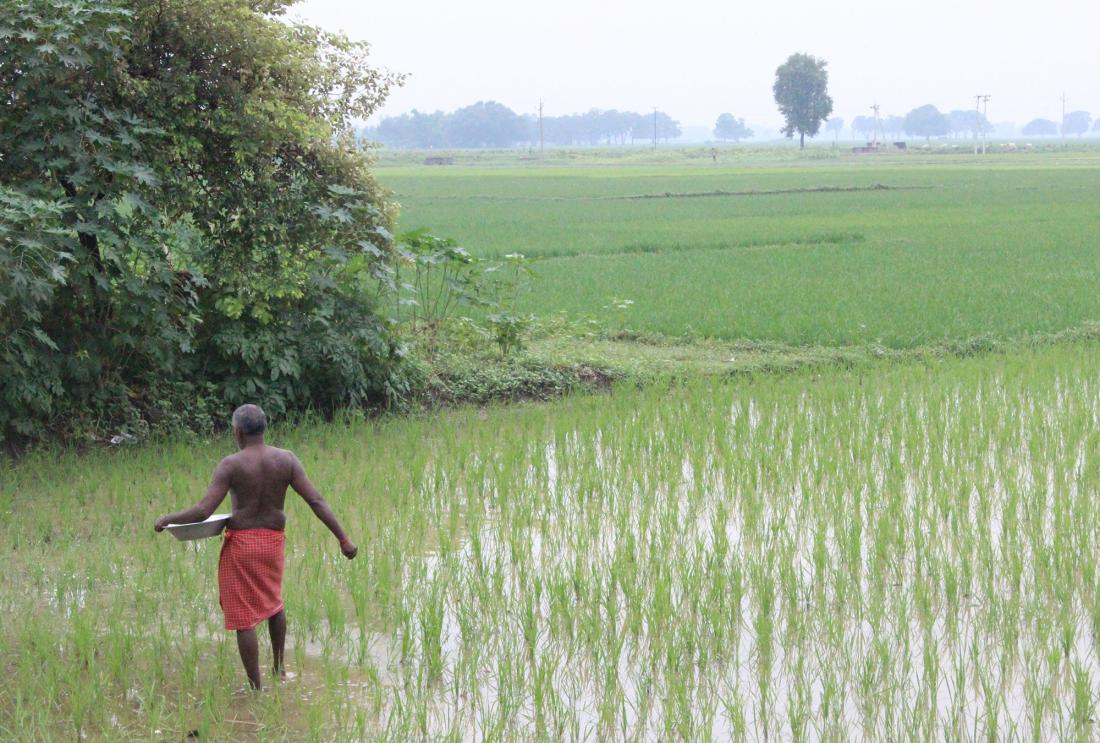Impact of Rainfall Insurance on Farmer Behavior in India
- Farmers
- Business investment
- Insurance
Many farmers self-insure against weather-related risks by growing low-value, low-risk crop varieties instead of higher-value crops that may be more sensitive to risks such as variation in rainfall. The provision of rainfall index insurance may allow farmers to invest in high-value crop production. In India, researchers found that providing insurance led farmers to shift production towards higher-risk, higher-return cash crops.
الموضوع الأساسي
Weather variation is a key source of risk for poor farmers, which affects their decisions about what to produce and how much to invest in production. Farmers with limited means to cope with weather-related risks may choose to grow traditional, low-return crop varieties instead of higher-return cash crops that are more sensitive to variation in rainfall. Formal insurance might help farmers cope with weather risks, enabling them to invest in more risky, but higher-return crop varieties, but conventional crop insurance is generally not available in rural areas of the developing world. However, a market for rainfall index insurance, which makes payments based on rainfall measured at a local site, has developed in recent years. The researchers' previous work has examined the demand for rainfall insurance and looked at the effect of different marketing techniques. This is the first study, however, to evaluate how rainfall insurance influences farmers' production and investment decisions.
سياق التقييم
Too little rainfall during the monsoon is the largest source of production and income risk for farmers in the Indian state of Andhra Pradesh. The monsoon season, which is also the main growing season, runs from June to November. In the study area, two common cash crops were castor and groundnut, which are mainly grown without irrigation. The most common subsistence crops were sorghum, pigeon pea, and other legumes. Cultivation costs are higher for the cash crops, which also require more rainfall. However, the expected profits for castor and groundnut are Rs. 2771 and Rs. 2951 (US$61.56 and US$65.561 ) per hectare, while the expected profits for the subsistence crops are negligible, or in the case of sorghum, negative (see figure below).

In 2009, 48 percent of farming households in the study sample grew cash crops. Many of these households used only family labor, but some hired additional workers. The average household size was 5.35 members, and the average age of the household head (male in 91 percent of cases) was 49.6 years old. Most household heads had little education, with 54 percent reporting never having attended school. Less than half reported being able to read and write.

معلومات تفصيلية عن التدخل
Researchers tested how the provision of rainfall index insurance affected farmer production decisions, focusing on the decision to grow cash crops. Approximately half of the 1,479 farming households in the sample were randomly selected to receive ten rainfall insurance policies in June 2009, at the start of the monsoon season. The combined market value of the policies was approximately Rs. 1,000 (US$22.22). The policies made payouts if rainfall during the sowing period, as measured at a local weather station, was below a designated threshold corresponding to the minimum required for successful crop growth. Payments depended on the size of the rainfall deficit, with a fixed maximum of Rs. 1,000 per policy.
To ensure that any observed differences in production and investment were due to the provision of insurance, not the wealth effect of receiving free policies, farmers in the comparison group were told that they would receive a fixed payment of Rs. 350 (US$7.78), the estimated average payout, when insurance payments were made following the monsoon season.
Rainfall during the 2009 monsoon season was below average, so three of the five weather stations used in the study made payouts, with one station reaching the maximum payout of Rs. 1,000 per policy. However, farmers had not yet received these payments at the time of the follow-up survey in November 2009.
النتائج والدروس المستفادة بشأن السياسات
Researchers found that the provision of insurance had no effect on total agricultural investment, but it caused households to shift those investments towards the production of higher-risk cash crops. Farmers who received insurance were 6 percentage points (12 percent) more likely to plant cash crops, from a base of 45 percent. They also increased the amount of land devoted to cash crops by about half an acre (27 percent), from a base of two acres.
The increased cultivation of cash crops was driven by more educated farmers, measured both by years of education and ability to read. Literate farmers were 15 percentage points more likely to plant cash crops if they received insurance. Among illiterate farmers, the provision of insurance had no effect on cash crop production. This suggests that farmers need a basic level of education to be able to take advantage of innovative financial products like rainfall insurance.
Finally, while the treatment increased the number of farmers growing cash crops, it did not cause farmers who were already growing cash crops to invest more in their production. This lack of effect, as well as the lack of effect on total agricultural expenditures, could be due to financial constraints or the difficulty of making changes in production (e.g. cultivating more land or acquiring different seeds) in the short run. Further research is needed to understand how access to rainfall index insurance may affect farmers’ production decisions over several growing seasons, and whether it can encourage lasting investments in more productive agricultural technologies.


